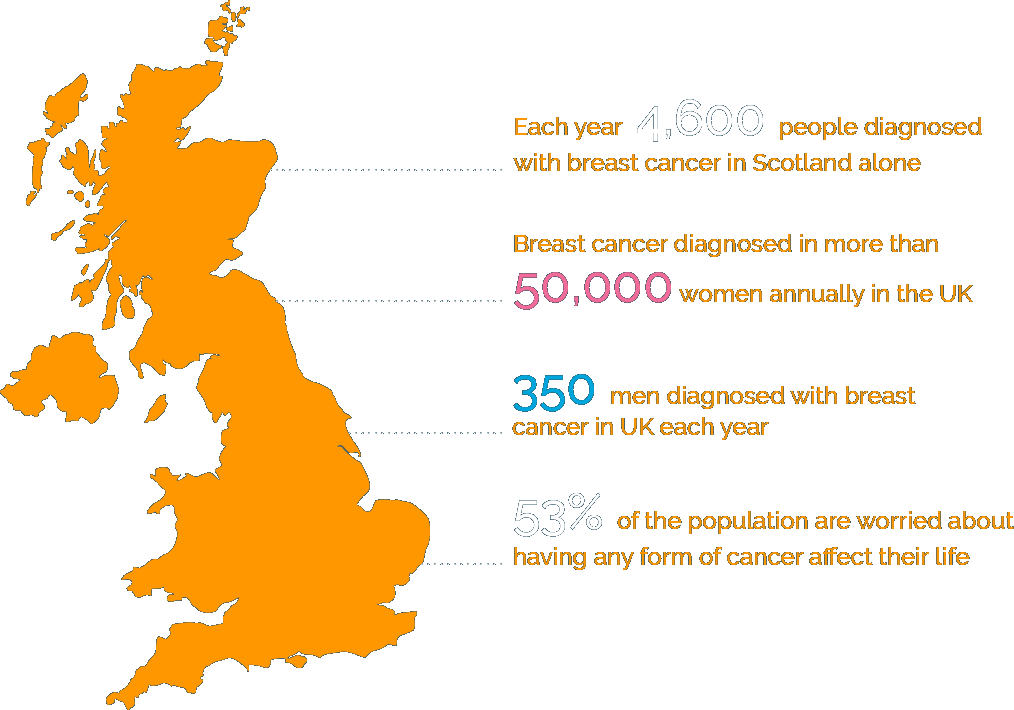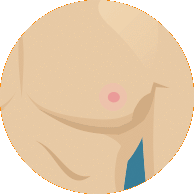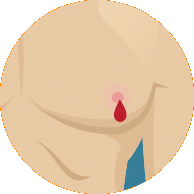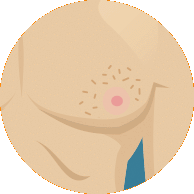Breast Cancer - Not Just For Girls
Raising awareness of male breast cancer

Raising awareness of male breast cancer


Each year 4,600 people diagnosed with breast cancer in Scotland alone
Breast cancer diagnosed in more than 50,000 women annually in the UK
350 men diagnosed with breast cancer in UK each year
53% of the population are worried about having any form of cancer affect their life
Second most common form of cancer, behind lung cancer
Thanks to the advancement in awareness, screening and treatment methods, survival rates for breast cancer have improved.
However, 1,000 women will die each year from breast cancer
Survival rate for
women is 83%;

for men,
74%;

Only 20% of men would go to the doctors after noticing signs of breast cancer
Although breast cancer can be diagnosed in all men and women, there are certain factors believed to increase the risks:
A genetic susceptibility (BRCA1 & BRCA2) more common with those of Jewish ancestry
Breast cancer is more likely to occur in people with a family history of cancer
Breast cancer risks increase in older men and women - especially those over 50
Breast cancer has been linked to both factors, particularly fat intake and physical activity
Men with higher oestrogen levels more at risk from breast cancer
Liver scarring evident after long-term alcohol abuse
MA rare genetic condition, where boys are born without the ability to regulate testosterone levels
Those working in hot environments are two times more likely to develop breast cancer
Exposure to radiation increases breast cancer risk levels
A genetic susceptibility (BRCA1 & BRCA2) more common with those of Jewish ancestry
Breast cancer is more likely to occur in people with a family history of cancer
Breast cancer risks increase in older men and women - especially those over 50
Breast cancer has been linked to both factors, particularly fat intake and physical activity
Men with higher oestrogen levels more at risk from breast cancer
Liver scarring evident after long-term alcohol abuse
MA rare genetic condition, where boys are born without the ability to regulate testosterone levels
Those working in hot environments are two times more likely to develop breast cancer
Exposure to radiation increases breast cancer risk levels
A genetic susceptibility (BRCA1 & BRCA2) more common with those of Jewish ancestry
Breast cancer is more likely to occur in people with a family history of cancer
Breast cancer risks increase in older men and women - especially those over 50
Breast cancer has been linked to both factors, particularly fat intake and physical activity
Men with higher oestrogen levels more at risk from breast cancer
Liver scarring evident after long-term alcohol abuse
MA rare genetic condition, where boys are born without the ability to regulate testosterone levels
Those working in hot environments are two times more likely to develop breast cancer
Exposure to radiation increases breast cancer risk levels
Only 26% of people are worried about being diagnosed with breast cancer, but it's still vitally important to be aware of the signs. Symptoms of breast cancer vary from patient to patient, but some of the more common include:

A lump in the breast

Tenderness, skin irritation or dimpling

Nipple discharge or pain

Scaliness, ulceration or retraction

The nipple beginning to turn on itself

Hard or inflamed nipple
For metastatic breast cancer, symptoms include:
If you notice any changes to your breasts, it's advised to visit a GP.
They will check the symptoms and provide further help and support. Diagnosis methods include:
An X-ray that pictures breast tissue to identify any changes as a direct result of cancerous activity
Uses high frequency sound waves to produce an image of the inside of breasts and highlight abnormalities
As a result of mammogram or ultrasound results, a tissue sample is taken using a hollow needle and analysed in the laboratory


An X-ray that pictures breast tissue to identify any changes as a direct result of cancerous activity
Uses high frequency sound waves to produce an image of the inside of breasts and highlight abnormalities
As a result of mammogram or ultrasound results, a tissue sample is taken using a hollow needle and analysed in the laboratory
Treating breast cancer varies on a case-by-case basis, dependent mainly on how the cancer has spread. Specialist teams will identify and recommend the best treatment procedure.
In most breast cancer cases, a mastectomy is recommended. The entire breast is removed (and sometimes the nipple, lymph nodes and muscle too)
High energy waves are used to destroy cancerous cells, used in conjunction with surgery. Radiotherapy helps prevent cancer from returning
This blocks oestrogen to breast tissue, used with surgery or as a way to slow the growth in terminal cases
Used post-surgery and includes a series of tablets or injections over a six-month period
Blocks biological processes in cancerous cells, which are relied upon for growth and reproduction
In most breast cancer cases, a mastectomy is recommended. The entire breast is removed (and sometimes the nipple, lymph nodes and muscle too)
High energy waves are used to destroy cancerous cells, used in conjunction with surgery. Radiotherapy helps prevent cancer from returning
This blocks oestrogen to breast tissue, used with surgery or as a way to slow the growth in terminal cases
Used post-surgery and includes a series of tablets or injections over a six-month period
Blocks biological processes in cancerous cells, which are relied upon for growth and reproduction
Breast Cancer Awareness Month is an important time of the calendar year for supporting this form of life threatening cancer. Help us boost awareness of breast cancer in men by using the # and sharing this infographic.
79% of people in the UK feel there is poor awareness of male breast cancer, so let's change this.
You can also contribute to the awareness campaign by partaking in your own events or donating money to charitable causes. Upcoming events include skydives, bungee jumps, running races, cake bakes and much more.